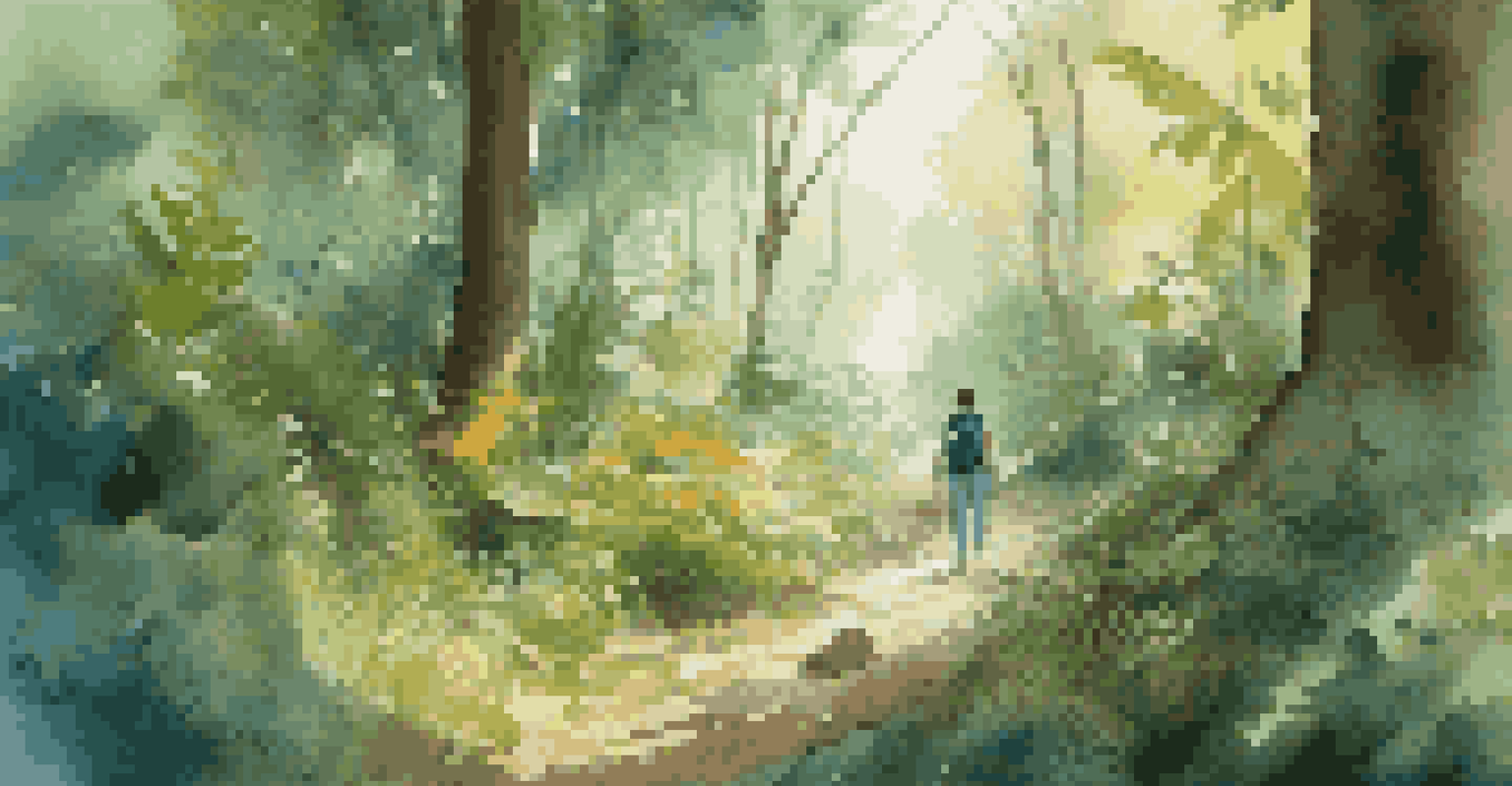Integrating Storytelling in VR: Engaging Learners in New Ways

The Power of Storytelling in Education
Storytelling has been a fundamental part of human culture for centuries. It captivates audiences, evokes emotions, and helps convey complex concepts in an accessible way. In education, stories can transform dull lessons into memorable experiences, making information stick.
The human mind thinks in terms of stories, not just facts and figures.
When we integrate storytelling into learning, we create a narrative that students can follow, fostering a deeper connection with the material. This connection is especially potent in virtual reality (VR), where learners can immerse themselves in a 3D narrative landscape. Here, they aren’t just passive recipients of information; they become active participants in their own learning journey.
By framing educational content within a story, educators can engage learners more effectively. This engagement can lead to improved retention rates and a genuine enthusiasm for the subject matter, ultimately reshaping the landscape of education.
Understanding Virtual Reality in Learning
Virtual reality is a technology that simulates a user’s physical presence in a digital environment. Often, this involves wearing VR headsets that transport users to entirely new worlds, allowing them to interact with 3D objects and environments. This immersive experience can significantly enhance learning outcomes, making complex subjects more tangible.

Incorporating VR into education isn’t just about technology; it’s about creating experiences that mirror real-life scenarios. For example, students can practice medical procedures in a VR setting before applying their skills in real hospitals. This hands-on approach allows learners to make mistakes in a safe environment, fostering confidence and competence.
Storytelling Engages Learners
Incorporating storytelling into education fosters a deeper connection with the material, enhancing engagement and retention.
As VR technology continues to evolve, its applications in education are expanding. From history lessons that place students in ancient civilizations to science experiments that take place in virtual labs, the possibilities are virtually endless.
How Storytelling Enhances VR Learning Experiences
When storytelling meets VR, the combination can create a deeply engaging learning environment. A well-crafted narrative can guide learners through their VR experience, providing context and meaning to what they see and interact with. This narrative thread helps learners understand the significance of their actions within the virtual world.
Virtual reality is the most immersive experience you can have, and storytelling is the most powerful way to connect with people.
For instance, imagine a VR history lesson where students witness key events through the eyes of a historical figure. This not only makes the lesson more engaging but also allows learners to develop empathy and a personal connection to the material. As they navigate through the story, they’re more likely to remember the facts and context surrounding those events.
Moreover, storytelling in VR often encourages collaboration among learners. As they immerse themselves in a shared narrative, they can work together to solve problems or complete tasks, fostering communication and teamwork skills that are vital in the real world.
Creating Compelling Narratives for VR Learning
Crafting a compelling narrative for VR requires a blend of creativity and educational insight. Educators and content creators need to identify the key learning objectives and weave them into an engaging story arc. The narrative should not only be informative but also intriguing enough to capture the attention of diverse learners.
For example, a lesson on ecosystems could be framed as a survival story where learners take on the role of a character navigating through different habitats. As they encounter challenges, they learn about biodiversity and environmental conservation naturally. This approach makes the learning experience both fun and educational.
VR Enhances Learning Experiences
Virtual reality immerses students in interactive environments, making complex subjects more tangible and relatable.
Ultimately, the success of a VR learning experience hinges on the strength of its narrative. A strong story can enhance motivation, improve comprehension, and lead to a more profound learning experience that resonates with students long after they’ve removed their headsets.
The Role of Interactivity in VR Storytelling
Interactivity is a cornerstone of the VR experience and plays a crucial role in storytelling. Unlike traditional media, VR allows learners to make choices that influence the progression of the narrative. This interactive element engages learners more actively and fosters a sense of agency in their learning.
For instance, in a VR simulation about climate change, learners could choose different paths that demonstrate the consequences of their decisions on the environment. This not only reinforces the learning objectives but also encourages critical thinking as students weigh their choices and the potential outcomes.
The interactivity found in VR storytelling encourages exploration and experimentation. As learners manipulate their virtual environment, they become more invested in the story, leading to a richer understanding of the concepts at play.
Challenges in Integrating Storytelling and VR
While the potential of integrating storytelling in VR is vast, there are challenges that educators face. One significant hurdle is the cost of VR technology, which can be a barrier for many institutions. Additionally, creating high-quality content that effectively combines narrative and educational objectives requires time, expertise, and resources.
Another challenge is ensuring that all learners can access and benefit from VR experiences. Not all students may feel comfortable using VR technology, and educators must consider diverse learning preferences and needs. This requires a thoughtful approach to design that ensures inclusivity.
Interactivity Boosts Understanding
The interactive nature of VR storytelling allows learners to make choices that influence narratives, promoting critical thinking and exploration.
Despite these challenges, the benefits of VR storytelling in education are compelling. By addressing these issues and finding innovative solutions, educators can harness the power of VR to create transformative learning experiences that engage and inspire students.
The Future of Storytelling in VR Education
As technology continues to advance, the future of storytelling in VR education looks promising. Innovations in VR hardware and software are making it easier to create immersive narratives that can reach a wider audience. This evolution will undoubtedly lead to more engaging and effective learning experiences.
Additionally, as educators become more familiar with VR technology, we can expect to see a surge in creative content that pushes the boundaries of storytelling. This could involve collaborations between educators, storytellers, and technologists to craft experiences that are both educational and entertaining.

Ultimately, the integration of storytelling in VR has the potential to revolutionize education as we know it. By creating immersive, narrative-driven experiences, we’re not just preparing students for exams; we’re equipping them with the skills and understanding they need to navigate the complexities of the real world.